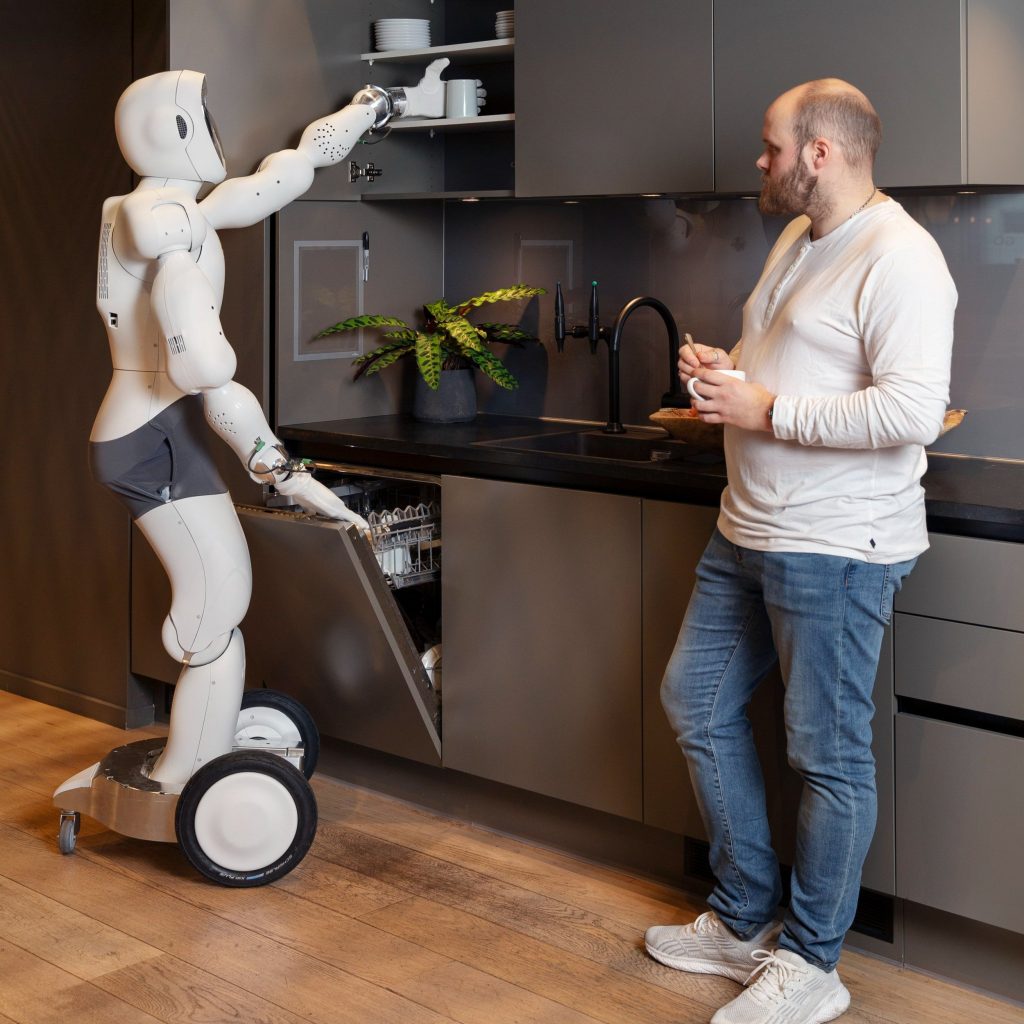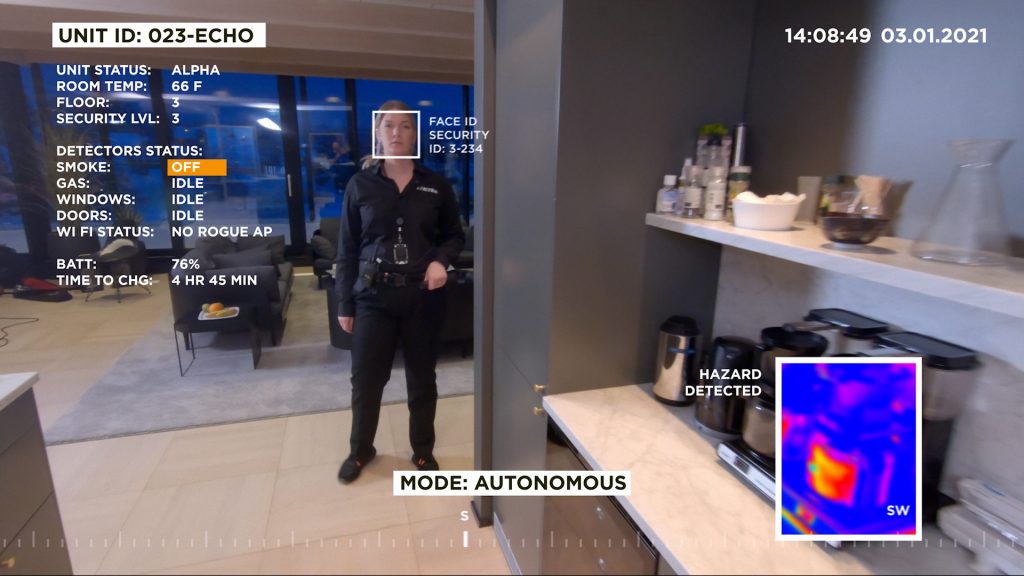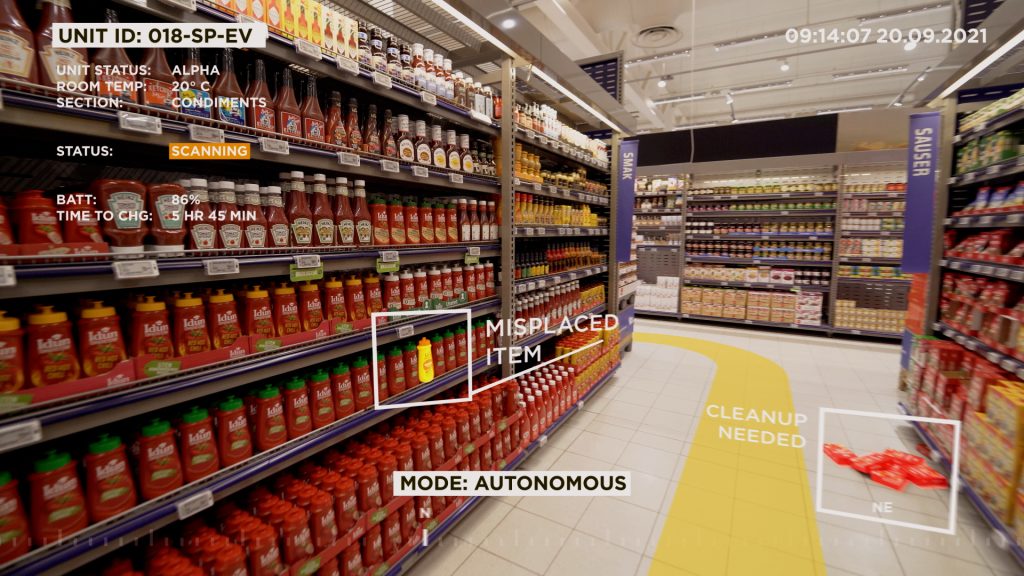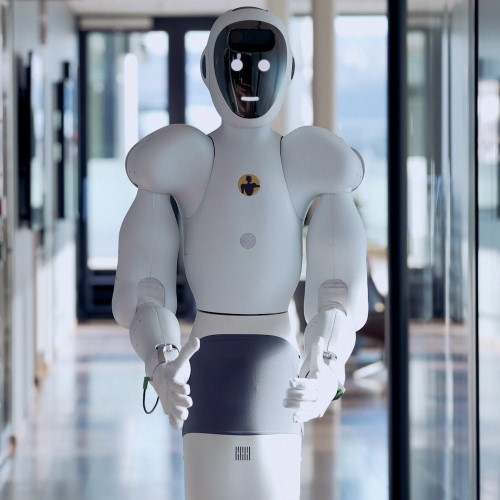I’ve spent the past couple of hours contemplating how wonderful I am. Of course, it probably goes without saying that this is not an unusual activity for me in and of itself, but this time there’s a reason for my cogitations and ruminations because I was comparing my brain (which is right up there as one of my favorite organs) and my body (which represents the current peak in human evolution) with that of a humanoid robot.
When you stop to think about it, our human bodies are awesome. As a starting point, they are incredibly energy efficient. For example, although I don’t wish to boast, I can walk approximately 4.6 miles powered by a single sausage biscuit from McDonalds. This is assuming a burn rate of 100 calories per mile (as per the Calories Burned Walking Calculator) and 460 calories per sausage biscuit (as per the McDonald’s Menu).
Our bodies are also incredibly strong and resilient. I’m not talking about body-builder-type activities here. I’m thinking of things like going to the grocery store with my wife (Gina the Gorgeous). Whenever we pop out for the odd item and return with a carload of stuff, I’m always impressed by the number and weight of the bags we can carry. I’m being serious here. Look at your hands and fingers and think how delicate they are in the scheme of things. Using bits of bone as scaffolding held together with ligaments and tendons and wrapped in skin, it’s really rather astounding what we can do with these little rascals.
If you don’t believe me, try to build a humanoid robot that can compete with us on this front. The reason all of this comes to mind is that I was just chatting with someone who is on a mission to do just that—the CTO of Halodi Robotics, Nicholas Nadeau—who introduced me to EVE.
Before we proceed, I should note that—for the past couple of years—Gina has been asking me how long it will be before humanoid robots become available. Specifically, she’s interested in one that could help around the home, performing tasks like loading and unloading the dishwasher, watering the plants, picking up the cat’s toys, and perhaps engaging in a little light dusting and hoovering. Gina also wants this robot to be able to accompany her to the supermarket and help with the shopping (“Please get me a large bottle of Heinz Tomato Ketchup and meet me at the meat counter,” type thing). Actually, now that I come to think about it, I’m not sure why Gina is so interested in our acquiring a robot because these are all tasks that she’s spent years training me to do already.
To be honest, I’ve been setting Gina’s expectations quite a way out in the future with respect to the availability of such robots. However, having talked to Nicholas, I’m now of the view that the future is closer than I thought.

Say hello to EVE (Image source: Halodi Robotics)
EVE is a self-balancing human sized robot with 23 degrees of freedom, force and impedance control on all joints, 2-arm manipulation, and the ability to handle an 8kg payload with each arm. EVE can squat down to pick things up off the floor or out of cupboards or off shelves; EVE can also reach up as shown in the image above.
This all started about six to seven years ago, at which time the folks at Halodi were focused on building humanoid robots for use in academic institutions and research-and-development (R&D) centers. Over the past couple of years, however, they’ve transitioned to commercial and industrial applications with a goal of introducing robots into the real world. And, when you come to think about it, the humanoid form factor is the only one that makes sense in real-world applications.
One thing that immediately caught my attention is that EVE is a wheeled robot, which means stairs pose a bit of a problem. However, as Nicholas told me, the facilities where EVE will be deployed are all ones where compliance with the Americans with Disabilities Act (ADA) is a legal mandate, which means everywhere must be accessible to a human in a wheelchair, and everywhere a wheelchair can go, so can EVE.
So, where might we expect to find EVE in the near-term future? Well, one obvious application is security. There is currently a huge churn rate with security personnel because the hours are bad, the pay is poor, and the work is boring… until it’s not, at which point you’d rather be somewhere else anyway. EVE is perfect for this sort of thing – roaming down corridors, taking elevators or using ramps as required, checking that doors are locked and lights are turned off… and so on and so forth. In fact, ADT recently signed the world’s largest order for humanoid robots by ordering 140 EVEs from Halodi.

One role for EVE is in security (Image source: Halodi Robotics)
Another role for EVE is in retail, performing tasks like restocking shelves, spotting out-of-place items and returning them to their rightful locations, identifying potential hazards and reporting them, gathering items for remote shoppers to pick up later… the list goes on.

Another role for EVE is in retail (Image source: Halodi Robotics)
And yet another obvious deployment is in healthcare facilities like hospitals and care homes where EVE can help nurses by performing tasks like delivering meals, fetching glasses of water, and checking in on patients during the night to make sure they are in bed and breathing easily and so forth.
I should point out that all of the applications discussed here (and others, like restocking vending machines, that I almost forgot to mention) aren’t “sometime in the future” because EVEs have already been deployed around the world and are performing these tasks as I pen these words.
But wait, there’s more, because EVE also supports a virtual reality (VR) avatar mode whereby a remotely located human wearing a VR headset can “jump” into EVE to see what it sees and take control of its movements. This disembodied robotics capability can be used for tasks like remote inspection and maintenance, and also to resolve more complicated situations that EVE finds itself unable to handle independently.
This brings me to another point, which is that the guys and gals at Halodi are currently working with the chaps and chapesses at Immervision. Up until now, EVE has been equipped with standard off-the-shelf machine vision capabilities. However, while this type of solution is really good for classical robotics, it’s not good enough for what the folks at Halodi are doing. For example, humans respond well to peripheral vision, which means that—in the case of EVE’s VR avatar mode—it’s necessary to have a combination of high resolution and a wide field of view.
Immervision, of course, specializes in machine vision, the creation of ultra-wide-angle lenses that are carefully crafted to provide more useful pixels, and associated image processing algorithms. Thus, Halodi and Immervision are collaborating on a custom solution comprising stereo forward vision (and mono backward vision) where each camera provides a 190°+ field of view resulting in 4K 360° vision. In the case of the VR avatar mode, the pan and tilt motors in EVE’s head and neck allow it to respond to and follow the gaze of the user. When operating autonomously, this camera system greatly facilitates the artificial intelligence (AI) and machine learning (ML) side of things—the fact that the floor close to EVE and the surrounding area are both fully visible allows navigation and object detection to be performed more effectively, while having the arms and hands always in view allows manipulation to be performed more accurately and efficiently.
Although the folks at Halodi have offices around the world, they are headquartered in Norway. My understanding is that EVEs are present in all Norwegian universities. The reason this is of interest is that—as I discussed in a recent column—in a couple of weeks, I will be giving a guest lecture to students at the Norwegian University of Science and Technology (NTNU). Dare we hope that EVE will attend? If so, you can bet your little cotton socks that I’ll be taking pictures and reporting back in a future column.
So, what say you? Are you as surprised as I to find that EVE is so advanced that this humanoid robot is already deployed around the globe performing real-world tasks? As always, I look forward to hearing your comments, questions, and suggestions.








3 thoughts on “Halodi’s Humanoid Robots are Already Amongst Us!”